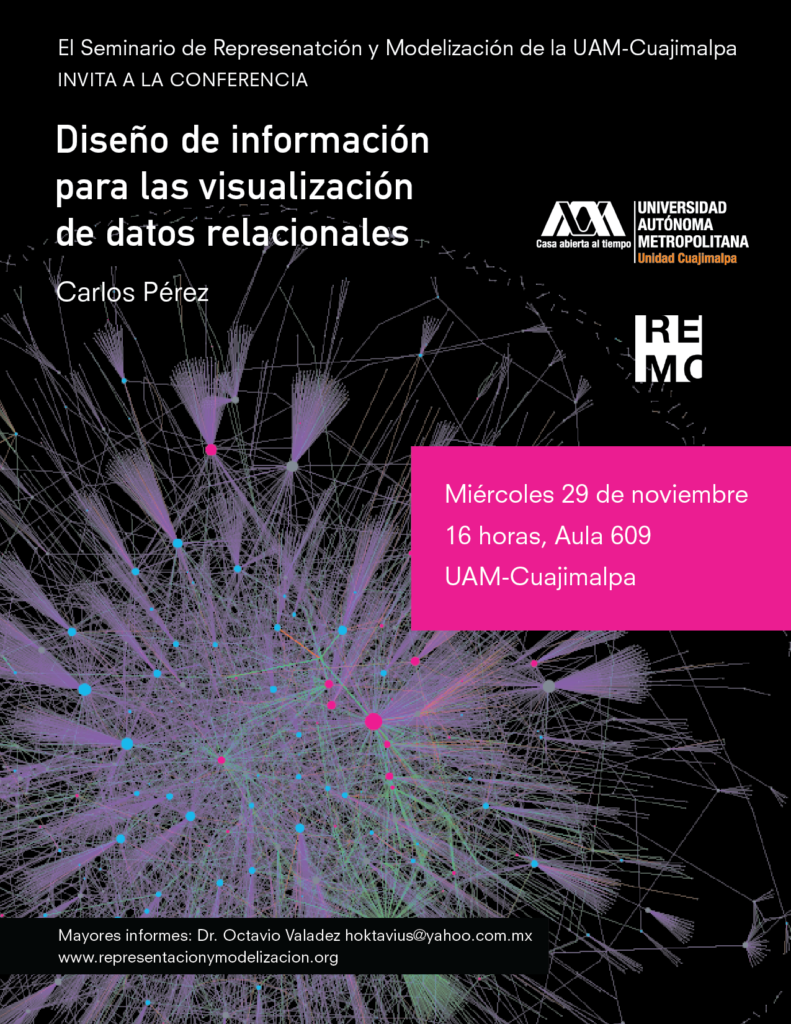
El próximo miércoles tendremos la última sesión del Seminario REMO para este trimestre. Para ello tendremos (confirmado) la visita de Carlos Pérez quien nos hablará sobre su trabajo en torno a la visualización de las redes de comunicación. El artículo que es
Pfeffer, J. (2013). Fundamentals of visualizing communication networks. China Communications, 10(3), 82–90. https://doi.org/10.1109/CC.2013.6488833
Abstract:
The human brain is built to process complex visual impressions within milliseconds. In comparison with sequentially coded spoken language and written texts, we are capable of consuming graphical information at a high bandwidth in a parallel fashion, producing a picture worth more than a thousand words. Effective information visualization can be a powerful tool to capture people’s attention and quickly communicate large mounts of data and complex information. This is particularly important in the context of communication data, which often describes entities (people, organizations) and their connections through communication. Visual analytics approaches can optimize the user-computer interaction to gain insights into communication networks and learn about their structures. Network visualization is a perfect instrument to better communicate the results of analysis. The precondition for effective information visualization and successful visual reasoning is the capability to draw “good” pictures. Even though communication networks are often large, including thousands or even millions of people, underlying visualization principles are identical to those used for visualizing smaller networks. In this article, you will learn about these principles, giving you the ability to assess the quality of network visualizations and to draw better network pictures by yourself.
Key words: communication networks, information visualization, visual analytics, human perception
La cita es el próximo miércoles 29 de noviembre a las 16 horas en la UAM-Cuajimalpa. Salón A 609.
